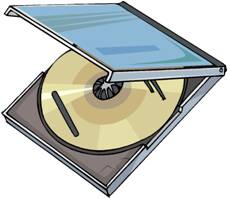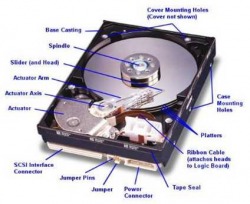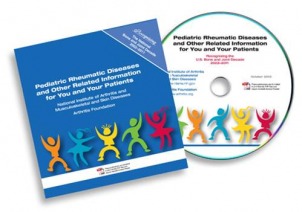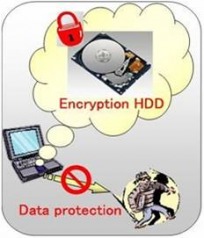Storage Devices and RFID Applications in Healthcare
Uses of CD-ROM

1) As an Educational Tool
There is a diverse range of uses conferred by the CD-ROM however we will specifically address the uses conferred by the CD-ROM in the healthcare setting. CD-ROM can serve as an educational and informational tool for doctors, healthcare professionals like us and essentially the general public as well.
Indeed the Internet provides a wide base for finding information of a desired topic, however this may take quite some time. Having a CD-ROM allows specialists, who have access to articles or journals online and other specific websites which the general public cannot easily gain access to, to be able to collate information on the particular disease or medical condition exhibited by the patient(s). Upon collation of information and resources, these are then compressed and burnt into a CD-ROM. Thus this makes it easier and efficient for the usersince all the resources pertaining to the topic of interest have been provided for him and it would not be as time-consuming and relatively general as compared to broadly surfing the Internet for the information.
The National Institute of Arthritis and Musculoskeletal and Skin Diseases (NIAMS) had announced the launch of the Pediatric Rheumatic Diseases CD-ROM and Other Related Information for You and Your Patients which is a comprehensive and cost-effective educational and informational tool for doctors and other health professionals who treat children with pediatric rheumatic diseases and related conditions. It can be easily navigated and the resources to enhance the understanding and management of the disease include the following:
There is a diverse range of uses conferred by the CD-ROM however we will specifically address the uses conferred by the CD-ROM in the healthcare setting. CD-ROM can serve as an educational and informational tool for doctors, healthcare professionals like us and essentially the general public as well.
Indeed the Internet provides a wide base for finding information of a desired topic, however this may take quite some time. Having a CD-ROM allows specialists, who have access to articles or journals online and other specific websites which the general public cannot easily gain access to, to be able to collate information on the particular disease or medical condition exhibited by the patient(s). Upon collation of information and resources, these are then compressed and burnt into a CD-ROM. Thus this makes it easier and efficient for the usersince all the resources pertaining to the topic of interest have been provided for him and it would not be as time-consuming and relatively general as compared to broadly surfing the Internet for the information.
The National Institute of Arthritis and Musculoskeletal and Skin Diseases (NIAMS) had announced the launch of the Pediatric Rheumatic Diseases CD-ROM and Other Related Information for You and Your Patients which is a comprehensive and cost-effective educational and informational tool for doctors and other health professionals who treat children with pediatric rheumatic diseases and related conditions. It can be easily navigated and the resources to enhance the understanding and management of the disease include the following:
- A collection of print-friendly PDF files of selected patient education brochures
- Professional education resources, including information from the Arthritis Foundation's Primer on the Rheumatic Diseases (12th edition)
- Professional educational resources on osteogenesis imperfecta from the NIH Osteoporosis and Related Bone Diseases National Resource Center
- Web links to numerous useful resources from the National Institutes of Health and other federal and non-profit organizations.
2) As a Portable Storage Device for Patient's Health Data
CD-ROM can also be used as a portable storage device used to record and store personal health information. This in turn confers advantages such as
history editing,data encryption, data importation and data sharing with the healthcare providers. From my clinical experience, SATA Woodlands is
one medical centre that still burns the information into a CD as requested by the physician on the x-ray order form. For example, after performing
an x-ray examination, the patient is asked to wait outside while the images are reviewed and the information of the patient is burned into the CD.
Thus the CD-ROM storing the images and the patient’s accompanying personal health information is brought by the patient to the referring clinic for
his doctor to review the information through his computer.
CD-ROM can also be used as a portable storage device used to record and store personal health information. This in turn confers advantages such as
history editing,data encryption, data importation and data sharing with the healthcare providers. From my clinical experience, SATA Woodlands is
one medical centre that still burns the information into a CD as requested by the physician on the x-ray order form. For example, after performing
an x-ray examination, the patient is asked to wait outside while the images are reviewed and the information of the patient is burned into the CD.
Thus the CD-ROM storing the images and the patient’s accompanying personal health information is brought by the patient to the referring clinic for
his doctor to review the information through his computer.
Risks of CD-ROM as a Portable Storage Device for Patient's Health Data
There are undoubtedly disadvantages in having the CD-ROM to store a patient’s health data. Besides being subjected to physical loss and damage,
what is more critical and needs to be addressed is the breach of confidentiality upon losing the CD. In addition, the CD-ROM is not guaranteed to be
100% secured from the risk of computer viral infection. In fact, it is highly susceptible to computer viruses and this would result in detrimental
consequences if the CD-ROM were to be shared among different healthcare providers situated in different clinics.
Reflecting back, I realized that I was intrigued and fascinated when I saw the CD being burnt. However, at that point in time, I was nonchalant
about the potential risks of the CD-ROM serving as a portable storage device since I was not exposed to the important concepts of health
informatics. Now that I have increased my awareness on the vital issue of security, I would advise them to improve on or change the system given
the opportunity in the future.
Uses of Hard Disk

A hard disk gives the advantage of hard disk encryption. Encryption means that it transforms whatever openly readable information that is in the computer making it unreadable. It does this by using a specific algorithm to make it unavailable to anyone except those with a key who can then decrypt the hard disk. This ultimately serves to protect data from being stolen.
This serves to secure patient records, medical images and applications installed in the computer. The company SafeNet.Inc is known to invest in the
concept of hard disk encryption in order to safeguard patient’s confidentiality. Since patient information travels across various networks, it is thus
easily susceptible to negligent and malicious attacks so hard disk encryption is one resolution to the problem. In fact, Seattle Children’s Hospital has
turned to hard disk encryption to make workstation and patient health data more secure from outside intrusions. “Healthcare providers can’t afford
to put their patients’ information at risk,” said Wes Wright, vice president and CTO of Seattle Children’s Hospital. “The sensitive nature of the
information we deal with demands the highest levels of security and confidentiality.” He also mentioned that San Francisco-based Guardian Edge's
Hard Disk Encryption software will be used to encrypt information passing through workstations throughout the hospital as well as personal health
information being stored at the hospital on laptops and USB drives. Thus medical images and patient personal health data are locked securely from
intruders.
concept of hard disk encryption in order to safeguard patient’s confidentiality. Since patient information travels across various networks, it is thus
easily susceptible to negligent and malicious attacks so hard disk encryption is one resolution to the problem. In fact, Seattle Children’s Hospital has
turned to hard disk encryption to make workstation and patient health data more secure from outside intrusions. “Healthcare providers can’t afford
to put their patients’ information at risk,” said Wes Wright, vice president and CTO of Seattle Children’s Hospital. “The sensitive nature of the
information we deal with demands the highest levels of security and confidentiality.” He also mentioned that San Francisco-based Guardian Edge's
Hard Disk Encryption software will be used to encrypt information passing through workstations throughout the hospital as well as personal health
information being stored at the hospital on laptops and USB drives. Thus medical images and patient personal health data are locked securely from
intruders.
Click here to return to the top of the page.




